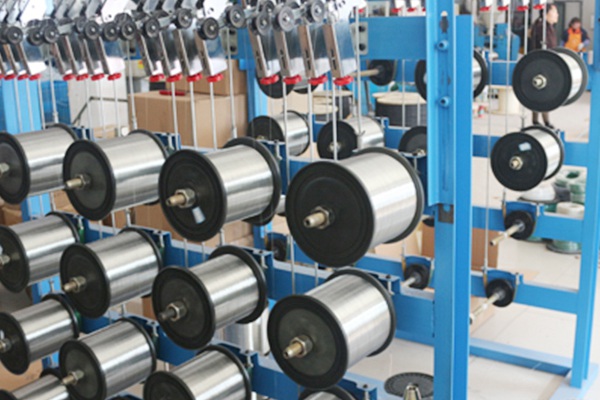General principles
The rated voltage of the cable is equal to or greater than the rated voltage of the network where it is located, and the maximum working voltage of the cable must not exceed 15% of its rated voltage. In addition to the use of copper core cables in places that require movement or severe vibrations, aluminum core cables are generally used. Cables laid in cable structures should be bare-armored cables or aluminum-clad bare plastic sheathed cables. Directly buried cables use armored cables with sheath or aluminum-clad bare plastic sheathed cables. Heavy-duty rubber-sheathed cables are used for mobile machinery. Corrosive soils generally do not use direct burial, otherwise special anti-corrosion layer cables should be used. In places with corrosive media, the corresponding cable sheath should be adopted. For laying cables vertically or at places with large height differences, non-drip cables should be used. Rubber insulated cables should not be used when the ambient temperature exceeds 40℃.
Section verification
(1) Choose cables according to voltage: Choose according to the first of the above-mentioned general principles.
(2) Choose the cable section according to the economic current density: the calculation method is the same as that of the wire section.
(3) Check the cable cross-section Iux≥Izmax according to the maximum long-term load current of the line
In the formula: Iux——the allowable load current of the cable (A);
Izmax——The long-term maximum load current (A) in the cable.
We use this selection method the longest in our daily work. Usually, we first find the working current of the line, and then according to the maximum working current of the line, it should not be greater than the allowable current-carrying capacity of the cable. The allowable long-term working current of the cable is shown in Table 1.
We often encounter this situation in actual work. Due to the increase in load and the increase in load current, the original cable has insufficient current carrying capacity and runs over current. In order to increase the capacity, considering the normal operation of the original cable, it is necessary to re-lay the cable. The construction is difficult and uneconomical, and we often adopt double or even triple merging.
In the choice of combined cables, many people think that the smaller the cable cross-section, the more economical and reasonable, as long as the current-carrying capacity requirements are met. Is this actually the case?
On January 3, 2006, the main cable from the 1# transformer to the power distribution room exploded. Two of the original 185mm four-core aluminum core cables exploded. In order to restore the power supply in time, the work area kept the other good cable and merged the two cables. A 120mm four-core aluminum core cable is used for power supply. After 10 months of operation, the main cable burst again on November 15, 2006. After inspection, it was found that the 185mm cable burst caused the accident.
Why did this accident happen? According to Table 1, we can get that the safe current carrying capacity of the three cables used is 668A, and the maximum load current measured by the clamp-type ammeter is only 500A in the living area. According to the principle of Iux≥Izmax, this operation It should be safe and reliable. However, we ignore that the cable has resistance, because when the multi-parallel cable is connected, the contact resistance is different at the connection, and this contact resistance is often comparable to the resistance of the cable itself. As a result, the current distribution of the multi-parallel cable will be inconsistent. The current distribution of balanced, multi-parallel cables is related to the impedance of the cable.
Rough calculation of copper wire interface: S=IL/54.4U (S wire cross-sectional area in millimeters)
Rough calculation of aluminum wire interface: S=IL/34U
